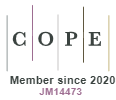A utilização do software VOSviewer em Pesquisas Científicas
DOI:
https://doi.org/10.5585/2023.24970Keywords:
VOSviewerDownloads
References
Albort-Morant, G., & Ribeiro-Soriano, D. (2016). A bibliometric analysis of international impact of business incubators. Journal of Business Research, 69(5), 1775–1779.
Bussler, N. R. C., Hsu, P. L., Storopoli, J. E., & Maccari, E. A. (2019). Cenários para o futuro da educação a distância. Revista Gestão & Tecnologia, 19(2), 4-26.
Cobo, M. J., López-Herrera, A. G., Herrera-Viedma, E., & Herrera, F. (2011). An approach for detecting, quantifying, and visualizing the evolution of a research field: A practical application to the Fuzzy Sets Theory field. Journal of informetrics, 5(1), 146-166.
Cobo, M. J., López‐Herrera, A. G., Herrera‐Viedma, E., & Herrera, F. (2011). Science mapping software tools: Review, analysis, and cooperative study among tools. Journal of the American Society for information Science and Technology, 62(7), 1382-1402.
Danvila-del-Valle, I., Estévez-Mendoza, C., & Lara, F. J. (2019). Human resources training: A bibliometric analysis. Journal of Business Research, 101, 627-636.
Ding, X., & Yang, Z. (2020). Knowledge mapping of platform research: a visual analysis using VOSviewer and CiteSpace. Electronic Commerce Research, 1-23.
Gutiérrez-Salcedo, M., Martínez, M. Á., Moral-Munoz, J. A., Herrera-Viedma, E., & Cobo, M. J. (2018). Some bibliometric procedures for analyzing and evaluating research fields. Applied intelligence, 48(4), 1275-1287.
Howison, J., & Bullard, J. (2016). Software in the scientific literature: Problems with seeing, finding, and using software mentioned in the biology literature. Journal of the Association for Information Science and Technology, 67(9), 2137–2155.
Moral-Muñoz, J. A., Herrera-Viedma, E., Santisteban-Espejo, A., & Cobo, M. J. (2020). Software tools for conducting bibliometric analysis in science: An up-to-date review. El Profesional de la Información, 29(1), 1-20.
Narin, F., & Hamilton, K. S. (1996). Bibliometric performance measures. Scientometrics, 36(3), 293-310.
Noyons, E., Moed, H., & Van Raan, A. (1999). Integrating research performance analysis and science mapping. Scientometrics, 46(3), 591-604.
Pan, X., Yan, E., Cui, M., & Hua, W. (2018). Examining the usage, citation, and diffusion patterns of bibliometric mapping software: A comparative study of three tools. Journal of informetrics, 12(2), 481-493.
Pritchard, A. (1969). Statistical bibliography or bibliometrics. Journal of documentation, 25(4), 348-349.
Rey-Martí, A., Ribeiro-Soriano, D., & Palacios-Marqués, D. (2016). A bibliometric analysis of social entrepreneurship. Journal Business Research, 69(5), 1651–1655.
Small, H. (1997). Update on science mapping: Creating large document spaces. Scientometrics, 38(2), 275–293.
Scopus. (2023). About Scopus. http://blog.scopus.com/about
Van Eck, N. J., & Waltman, L. (2007). Bibliometric mapping of the computational intelligence field. International Journal of Uncertainty, Fuzziness and Knowledge-Based Systems, 15(05), 625-645.
Van Eck, N. J., & Waltman, L. (2014). Visualizing bibliometric networks. In: Ding, Y., Rousseau, R., Wolfram, D. (Eds) Measuring Scholarly Impact: Methods and practice. Springer, 285-320.
Van Eck, N., & Waltman, L. (2010). Software survey: VOSviewer, a computer program for bibliometric mapping. Scientometrics, 84(2), 523-538.
VOSviewer. (2023). Highlights. https://www.vosviewer.com/features/highlights
Yu, Q., Ding, Y., Song, M., Song, S., Liu, J., & Zhang, B. (2015). Tracing database usage: Detecting main paths in database link networks. Journal of Informetrics, 9(1), 1–15.
Downloads
Published
How to Cite
Issue
Section
License
Copyright (c) 2023 Autores

This work is licensed under a Creative Commons Attribution-NonCommercial-ShareAlike 4.0 International License.
- Abstract 1564
- pdf (Português (Brasil)) 790






